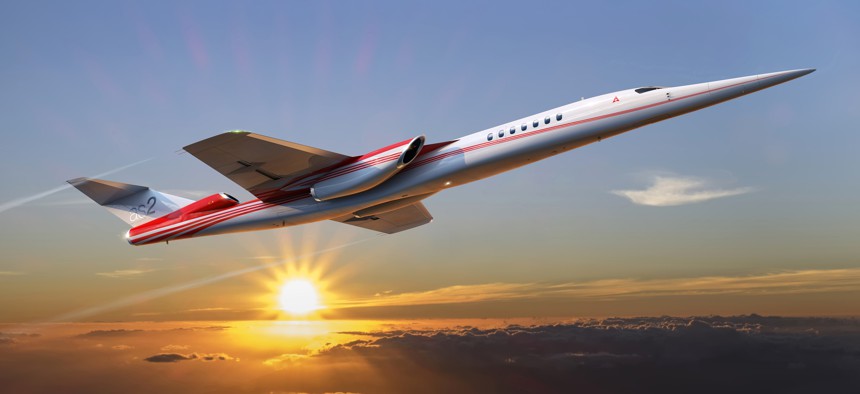Supersonic Bizjets May Attract Pentagon Interest
Three teams are pursuing latter-day SSTs. The U.S. military might have use for them.
If supersonic passenger jets return to the skies, the U.S. military might find a few reasons to lease or even buy a few.
More than 15 years after the last flight of the Concorde — the passenger jet that flew at just over Mach 2 — NASA and two private companies, Aerion Supersonic and Boom Supersonics, are leading independent teams vying to accelerate passengers past the speed of sound by the mid-2020s.
This may be of interest to the Pentagon for a few reasons, said Richard Aboulafia, vice president of the Teal Group Association. A supersonic passenger jet could help hostage-rescue or combat-search-and-rescue teams get on scene in a hurry, or bring senior officials in to help resolve a crisis, Aboulafia said.
“Very few people realize that hostage rescue and other high-value assets need to be deployed at the same speed we all travel on Southwest,” Aboulafia said.
Related: The Problem with the Pentagon’s Hypersonic Missile
Related: Why Your Plane Can’t Have An Escape Pod
Related: The US is Accelerating Development of Its Own ‘Invincible’ Hypersonic Weapons
He also noted that the developments needed to build latter-day SSTs — for example, new ways to quiet sonic booms — may find its way into the military sphere. Several defense companies, including Lockheed Martin’s Skunk Works, are on the three teams.
The idea that supersonic business jets could be useful to the military is not new; in 1999, an Air Force major explored various use cases in a paper for the Air Command and Staff College.
“During Desert Storm, having access to supersonic, global transportation may have given the State Department the ability to get a negotiation team to the cease-fire agreements being conducted by General Schwarzkopf in Iraq,” Maj. Matthew Malloy wrote.
If the military doesn't choose to buy any of the new supersonic bizjets, it might still use them, just as it leases (subsonic) aircraft from Learjet for special operations missions. The Air Force also flies more than four dozen C-21 aircraft, which are Learjet 35A business jets outfitted for military use: 34 in active-duty squadrons and 19 with the National Guard.
At a Royal Aeronautical Society event last Thursday, Aerion spokesman Jeff Miller said that a supersonic business jet was on the way, built in collaboration with Lockheed Martin and Honeywell Aerospace. GE has promised to supply the engines, which Miller said has given Aerion more confidence in its timeline.
“We intend to cross the Atlantic at supersonic speed in 2023 on the 20th anniversary of the last flight of the Concorde, certify in 2025, and have entry into service in 2026,” Miller said.
The 49-meter, 12 passenger jet will cost $120 million.
NEXT STORY: Rust Is a $21-Billion Problem for the Pentagon




